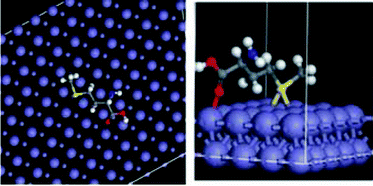Understanding corrosion inhibition mechanisms—experimental and theoretical approach
Abstract
We describe a combined electrochemical and first principle density functional study to probe the corrosion inhibiting and

* Corresponding authors
a
State Key Laboratory for Corrosion and Protection, Institute of Metal Research, Chinese Academy of Sciences, 62 Wencui Road, Shenyang, China
E-mail:
emekaoguzie@gmail.com, liying@imr.ac.cn
Tel: +234 803 7026581
b Electrochemistry and Materials Science Research Laboratory, Department of Chemistry, Federal University of Technology Owerri, Owerri, PMB, Nigeria
c Shenyang National Laboratory for Materials Sciences, Institute of Metal Research and International Centre for Materials Physics, Chinese Academy of Sciences, 72 Wenhua Road, Shenyang, China
We describe a combined electrochemical and first principle density functional study to probe the corrosion inhibiting and

 Please wait while we load your content...
Something went wrong. Try again?
Please wait while we load your content...
Something went wrong. Try again?
E. E. Oguzie, Y. Li, S. G. Wang and F. Wang, RSC Adv., 2011, 1, 866 DOI: 10.1039/C1RA00148E
To request permission to reproduce material from this article, please go to the Copyright Clearance Center request page.
If you are an author contributing to an RSC publication, you do not need to request permission provided correct acknowledgement is given.
If you are the author of this article, you do not need to request permission to reproduce figures and diagrams provided correct acknowledgement is given. If you want to reproduce the whole article in a third-party publication (excluding your thesis/dissertation for which permission is not required) please go to the Copyright Clearance Center request page.
Read more about how to correctly acknowledge RSC content.
 Fetching data from CrossRef.
Fetching data from CrossRef.
This may take some time to load.
Loading related content
